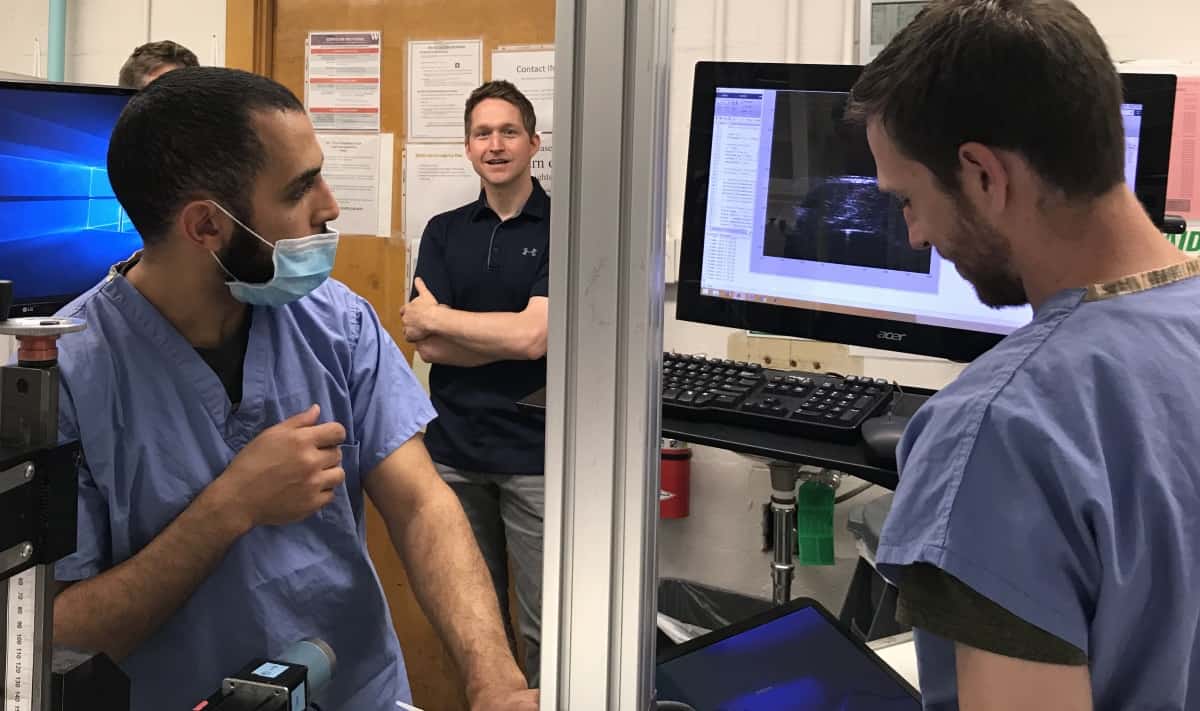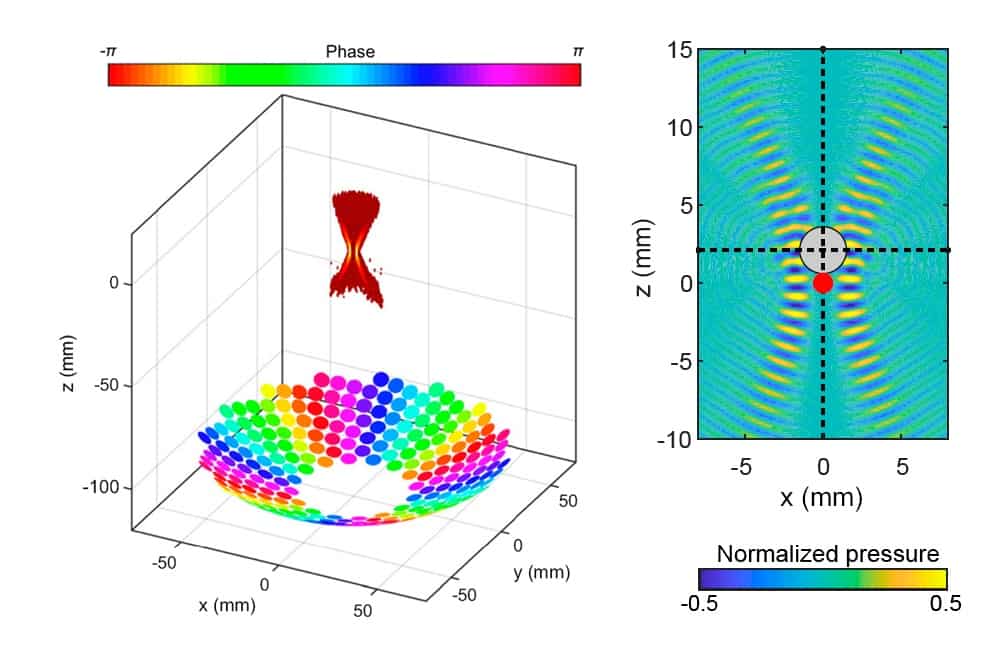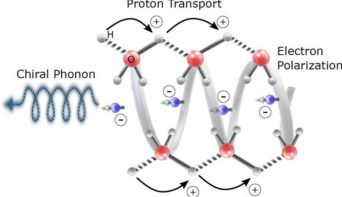
Acoustic tweezers that allow the remote manipulation of internal objects from outside the body could one day be used to expel urinary stones or control ingestible cameras. Researchers at the University of Washington and Moscow State University demonstrated the technique by trapping 3-mm glass beads in vortex-shaped beams of ultrasound. By steering the beams electronically, or by simply moving the ultrasound transducer, they directed the beads along complex 3D paths within a water tank and in the bladders of live pigs.
Optical tweezers have been used by physicists for decades to confine and manipulate microscopic objects. The technique is based on the fact that light refracted by a dielectric particle imparts a sideways kick, pushing the particle back when it deviates from the axis of a laser beam. This force keeps the particle at the centre of the beam where the light intensity is greatest. Acoustic tweezers work differently in that the trapped particle can also scatter the ultrasound beam. The particle therefore becomes trapped when the centre of the beam hosts a region of low intensity.
To create an ultrasound beam with such a configuration, Mohamed Ghanem, at the University of Washington, and colleagues configured a circular, 256-element ultrasound transducer such that the phase of each element varied according to its angular position on the array. This arrangement caused the sound waves to interfere destructively along the axis of the beam and constructively at the edge, generating a hollow, hourglass-shaped intensity pattern at the beam’s focus.

The researchers used this intensity pattern to capture a glass bead resting on a membrane within a tank of water. Once captured, they moved the bead in the x–y plane (perpendicular to the array axis) by either moving the transducer or – at the risk of deforming the potential well and losing the bead – by steering the beam electronically.
As the bead was trapped just beyond the waist of the hourglass, the team could push it away from the transducer by extending the focus of the beam. By arranging the experiment so that the beam was directed upwards into the water tank, they used gravity as the returning force, allowing full control over the bead’s motion in the z direction.
In their in vitro setup, the researchers also experimented with different phase patterns and beam powers. They found that increasing the rate of phase variation around the transducer array produced a larger beam diameter and a deeper potential well for a given power output. Reversing the direction of this phase change shifted the helicity of the beam’s wavefront from clockwise to anti-clockwise or vice versa, arresting any rotational motion that could otherwise lead to the particle escaping from the trap.
To test the technique in vivo, Ghanem and colleagues implanted beads in the urinary bladders of three anaesthetized pigs. Directing the beam upwards into the pigs’ abdomens while the animals lay on their sides, the researchers moved the beads along complex paths several millimetres long. They point out that such distances are shorter than the 1–3 cm typically required to clear kidney stones or kidney stone fragments, but add that they are working on a system capable of steering particles along longer paths.
After the procedure, none of the animals showed any signs of injury caused by the ultrasound beam, though the researchers note that the rate of energy absorption – specifically, the ISPTA (spatial-peak temporal average intensity) – exceeded the safety limits defined for diagnostic ultrasound imaging.
“The ISPTA is conservatively set based on thermal tissue damage for developing embryos,” says Ghanem. “It is quite difficult for therapeutic techniques to come under such a threshold, but our tissue evaluation shows no tissue damage due to the ultrasound exposure.”
Apart from conducting further investigations into the technique’s safety, Ghanem and colleagues intend to test it under a range of conditions on randomly shaped targets with different acoustic properties. They also foresee it being used beyond the medical realm, with possible applications in zero-contamination manufacturing or laboratory environments.
Full details of the research are published in Proceedings of the National Academy of Sciences.



